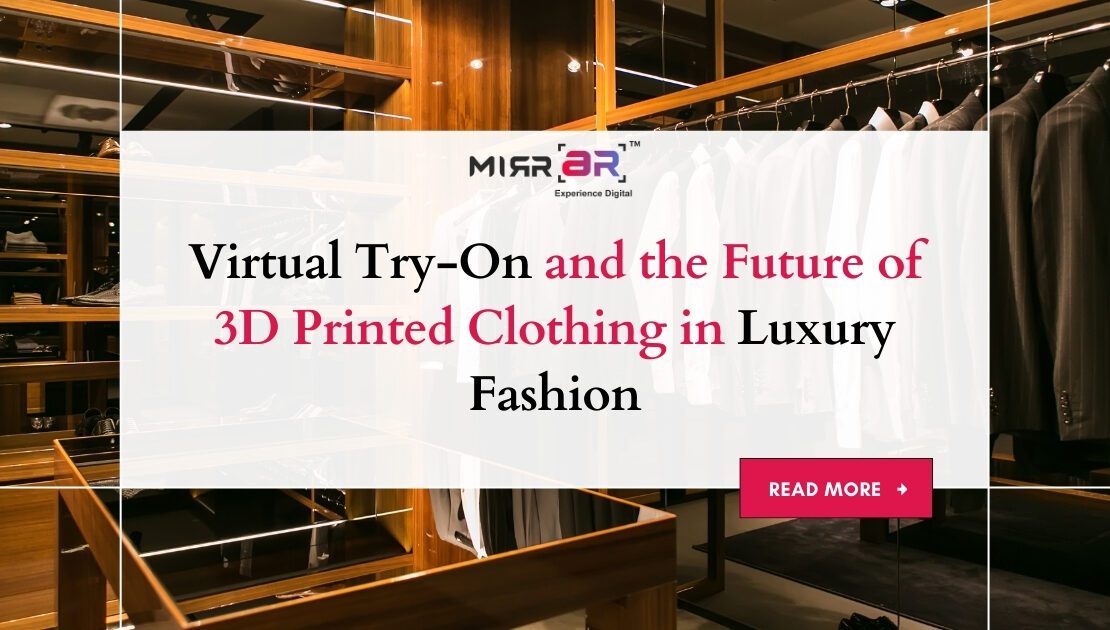
The luxury fashion world thrives on exclusivity, innovation, and personalization. Today, two disruptive forces—Virtual Try-On (VTO) technology and 3D printed clothing—are reshaping the landscape like never before. As consumer behavior shifts toward digital-first experiences, luxury brands are embracing virtual and 3D design capabilities to offer not only convenience but also unmatched customization and sustainability. This convergence of tech and fashion is setting a new standard for luxury.
The Digital Revolution in Luxury Fashion
The digital transformation in luxury retail has moved beyond e-commerce listings and social media campaigns. High-end consumers now expect immersive, tech-powered experiences that mimic or even surpass in-store interactions. That’s where Virtual Try-On enters the scene.
With platforms like MirrAR VTO, luxury brands can offer customers a hyper-realistic try-on experience from the comfort of their homes. Whether it’s a couture gown, high jewelry, or designer eyewear, customers can visualize the perfect fit, style, and look—all through their phone or smart mirror.
Understanding Virtual Try-On Technology
Virtual Try-On is powered by augmented reality (AR) and artificial intelligence (AI). It creates a digital model of the user and overlays 3D assets—such as garments or accessories—in real time. Advanced platforms like MirrAR’s VTO use face and body tracking, real-world lighting simulation, and deep learning algorithms to offer incredibly realistic visuals.
What sets VTO apart in luxury fashion is its ability to convey detail. Intricate stitching, fabric texture, shine, and flow—critical to high-end design—are captured and rendered beautifully, allowing luxury buyers to make confident, informed decisions.
3D Printed Clothing: A New Era of Design
3D printed clothing isn’t just a buzzword—it’s a design revolution. By using digital files and specialized printers, fashion designers can now create garments directly from scratch, bypassing traditional sewing, cutting, and assembling processes. For luxury brands, 3D printing offers:
- Customization: Each garment can be tailored to the individual’s exact measurements and style preferences.
- Sustainability: Made-to-order production reduces excess inventory and waste.
- Innovation: Complex patterns and structures previously impossible with traditional methods are now within reach.
Where VTO Meets 3D Printing
Imagine a customer virtually trying on a 3D printed luxury dress before it even exists physically. That’s the future being enabled by the fusion of VTO and 3D printing.
- Design-to-Try-On in Real Time: Designers can now create a 3D garment design and upload it directly into a VTO platform like MirrAR, allowing customers to try it virtually before production even begins.
- On-Demand Customization: VTO gathers user preferences and fit data, which can feed into 3D printing software for a truly bespoke garment made to the exact specifications of the customer.
- Pre-Orders and Limited Editions: Brands can showcase upcoming 3D printed pieces through virtual fashion shows or exclusive online previews using VTO, allowing for early feedback and pre-orders—eliminating overproduction and increasing demand anticipation.
Elevating the Luxury Experience
The integration of VTO and 3D printed fashion isn’t just about innovation; it’s about elevating the brand experience. For luxury customers, it means:
- Trying before buying without ever stepping into a store.
- Receiving custom-tailored pieces that fit flawlessly from the first wear.
- Participating in the design process, offering inputs that are instantly visualized and then crafted.
This level of engagement transforms luxury fashion from a transactional purchase to an interactive journey.
Also Read: The Future of Fashion Weeks: How Virtual Try-On is Changing the Runway Experience
Addressing Challenges and the Road Ahead
Of course, like any emerging technology, there are challenges to overcome. High-quality rendering, integration with legacy systems, and ensuring scalability remain focal points for both VTO and 3D printed clothing. But with platforms like MirrAR continuously innovating and expanding capabilities—such as real-time AR rendering, Metaverse integration, and AI-driven personalization—the gap between physical and digital continues to close.
Luxury brands that begin investing now will be the ones that lead in the next era of digital fashion.
Conclusion: A Fashion Future Worth Wearing
The convergence of Virtual Try-On and 3D printed clothing is not just a trend; it’s the next chapter in luxury fashion’s evolution. As sustainability, customization, and digitization dominate consumer preferences, luxury brands must pivot toward immersive, tech-driven experiences.
MirrAR’s VTO platform is at the heart of this transformation—bridging design, innovation, and customer-centricity. Whether it’s empowering shoppers to try on a masterpiece from Milan while lounging in Manhattan, or enabling designers to instantly visualize a 3D concept on a global audience, the possibilities are limitless.
Luxury is no longer just about craftsmanship; it’s about crafting experiences—and the future has already begun.
